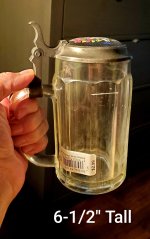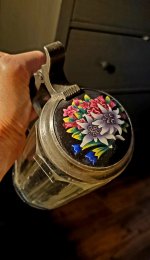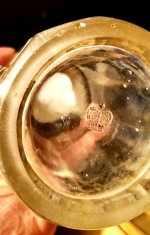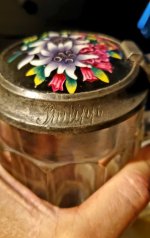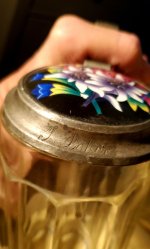tamrock
Gold Member
- Jan 16, 2013
- 15,332
- 30,916
- Detector(s) used
- Bounty Hunter Tracker IV
- Primary Interest:
- All Treasure Hunting
I'm not sure this would be described as a beer stein, so I'm gonna call it a glass mug with ceramic and pewter lid. I did find the glass mark being GS with crown as Saxony Glass. There is one similar on ebay saying this company was founded as Vereinigte Radeburger Glashütten A.G. in 1879, in Radeburg nr. Dresden. The cost was half of $2.99 and it was being sold on the day I picked it up at 50% off, so it was purchased for pretty much pocket change and for that price I felt its a true antique I could get for very little money. I'd like some options on how old this might be. My guess is first quarter of the 20th C., but it could be maybe as old as the late 19th C.? It doesn't really seem to be worth all that much, maybe because it isn't what you think of when you're thinking antique stoneware beer steins, that I think more collectors are drawn to.


